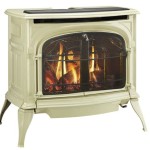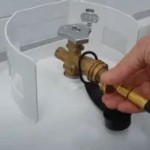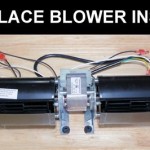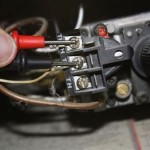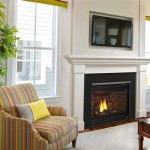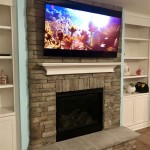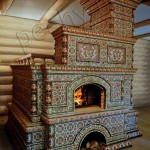Can I Mount My TV Above a Gas Fireplace? Considerations and Best Practices
Mounting a television above a gas fireplace is a popular design trend aimed at maximizing space and creating a focal point in a living room. However, this arrangement presents several challenges that must be carefully considered before proceeding. Factors such as heat exposure, viewing angles, structural integrity, and cable management all play a crucial role in determining the feasibility and safety of this installation. Failure to properly address these issues can lead to damage to the television, structural problems, and potential safety hazards.
This article will explore the key considerations involved in mounting a television above a gas fireplace, offering insights into the potential risks and providing guidance on mitigating those risks to ensure a safe and functional installation. The information will cover aspects ranging from assessing the fireplace's heat output to selecting appropriate mounting hardware and managing cable connectivity. Careful planning and execution are paramount to achieving a successful and aesthetically pleasing result.
Understanding the Heat Factor
The primary concern when mounting a television above a gas fireplace is the potential for heat damage. Electronic components are sensitive to high temperatures, and prolonged exposure to excessive heat can significantly reduce the lifespan of a television and potentially cause irreversible damage. The heat generated by a gas fireplace rises directly upwards, creating a concentrated area of high temperature directly above the unit. This heat can warp plastic components, degrade internal circuitry, and cause screen discoloration.
Several factors influence the amount of heat that reaches the television. The size and BTU (British Thermal Units) rating of the fireplace are critical determinants. A larger fireplace with a higher BTU rating will naturally produce more heat. The design of the fireplace itself also plays a role. Some fireplaces are designed with features that help deflect heat forward, while others allow heat to rise directly upwards. The presence of a mantel or other shielding can also significantly reduce the amount of heat reaching the area above the fireplace.
To assess the potential heat risk, it is crucial to measure the temperature above the fireplace while it is operating at its highest setting. This can be done using a digital thermometer or an infrared temperature gun. The temperature should be measured at the location where the bottom of the television will be positioned. If the temperature exceeds the television manufacturer's recommended operating temperature (typically around 100°F or 38°C), it may be necessary to implement heat mitigation strategies.
One common strategy is to install a substantial mantel that extends outwards from the wall. A sufficiently deep mantel can deflect a significant portion of the rising heat away from the television. Another option is to install a heat shield above the fireplace. These shields are typically made of metal and are designed to absorb and dissipate heat. The effectiveness of a heat shield depends on its size, material, and installation method.
Ventilation is also critical. Ensuring adequate airflow around the television can help to dissipate heat and prevent it from building up. This can be achieved by leaving sufficient space between the television and the wall, and by ensuring that the television's vents are not blocked. Choosing a television with a built-in cooling system can also help to mitigate heat-related problems.
Addressing Viewing Angle and Ergonomics
Beyond the technical aspects of heat and structural integrity, the viewing angle is another crucial consideration. Mounting a television too high can result in a strained neck and an uncomfortable viewing experience, particularly during extended viewing sessions. The ideal viewing angle is generally considered to be at eye level when seated. Therefore, the height of the television should be determined based on the seating arrangement in the room and the height of the viewers.
When mounting a television above a fireplace, it is often necessary to mount it higher than eye level. In these cases, it is important to consider the viewing angle and to select a mounting bracket that allows for tilting the television downwards. A tilting mount can help to compensate for the increased height and improve the viewing angle. The amount of tilt required will depend on the height of the television and the distance from the seating area.
The size of the television also influences the optimal viewing distance. A larger television requires a greater viewing distance to avoid eye strain. Therefore, the size of the television should be chosen based on the size of the room and the distance from the seating area. It is important to consider the overall layout of the room and to ensure that the television is positioned in a way that provides a comfortable and enjoyable viewing experience for all viewers.
Furthermore, ambient lighting can significantly impact the viewing experience. Glare from windows or other light sources can make it difficult to see the screen. Therefore, it is important to consider the placement of windows and other light sources when positioning the television. Using curtains or blinds to control the amount of light entering the room can also help to improve the viewing experience. Anti-glare screens are also available for some televisions, which can help to reduce glare from ambient light.
Ensuring Structural Integrity and Cable Management
The structural integrity of the wall above the fireplace is paramount to ensure the safe and secure mounting of the television. Most walls are constructed with wood studs or metal studs, and the mounting bracket must be securely attached to these studs to support the weight of the television. Locating the studs is essential, and this can be done using a stud finder or by manually probing the wall. Once the studs have been located, the mounting bracket should be securely attached using appropriate screws or bolts.
If the wall is made of brick or concrete, it will be necessary to use special anchors designed for these materials. Brick and concrete anchors provide a secure grip in solid masonry and can support the weight of the television. It is important to select anchors that are appropriate for the type of masonry and the weight of the television. Drilling into brick or concrete requires specialized tools and techniques, and it is often best to hire a professional installer for this type of installation.
Cable management is another important consideration. The television will require power, and it will likely need to be connected to other devices such as cable boxes, gaming consoles, and streaming devices. Running cables neatly and discreetly is essential to maintain a clean and organized appearance. This can be done using cable concealers, which are plastic channels that attach to the wall and hide the cables. Cable concealers are available in a variety of sizes and colors to match the wall and decor.
Another option is to run the cables inside the wall. This requires drilling holes in the wall and running the cables through the holes. This method provides a very clean and discreet appearance, but it requires more effort and expertise. It is important to ensure that the cables are properly protected and that they meet all electrical safety codes. It may be necessary to hire a professional electrician to run the cables inside the wall.
Wireless connectivity can also reduce the number of visible cables. Streaming devices such as Roku, Apple TV, and Amazon Fire Stick can connect to the television wirelessly, eliminating the need for HDMI cables. Wireless speakers can also be used to reduce the number of speaker wires. However, even with wireless connectivity, it will still be necessary to run a power cable to the television.
Finally, consider the placement of power outlets. If there is not a power outlet located near the television mounting location, it will be necessary to install one. This should be done by a qualified electrician to ensure that it meets all electrical safety codes. The electrician can also install a surge protector to protect the television from power surges. Proper planning and execution of cable management is essential for a safe and aesthetically pleasing installation.

Can I Mount My Tv Above The Fireplace

Can I Mount My Tv Above The Fireplace

Can I Mount A Tv Over My Fireplace Forshaw Of St Louis

Everything You Need To Know About Tv Mounts For Fireplaces

ᑕ❶ᑐ What To Consider Before Mounting A Tv Above Fireplace

Can I Mount A Tv Over My Fireplace Warming Trends

ᑕ❶ᑐ What To Consider Before Mounting A Tv Above Fireplace

Can I Mount A Tv Over My Fireplace Warming Trends

Pros And Cons Of Mounting Your Tv Over Fireplace Vancouver Gas Fireplaces

Can I Hang A Tv Over My Fireplace Woodlanddirect Com

